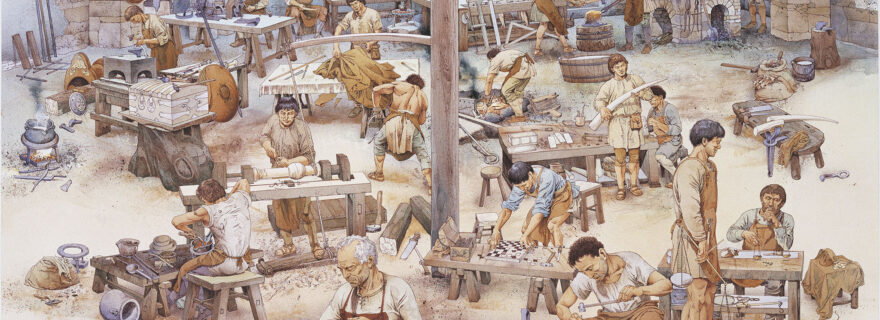Living as a Roman Citizen in Byzantine Rome: The Archaeology of Exchange and Identity
The city of Rome went from inviting the Byzantine army in 536 to shoving aside Constantinople by declaring the Frankish king Charlemagne emperor in 800. How did this happen? Clues to the cause for this radical twist may be found in the archaeological record.
The Byzantine period is a lesser known episode in the history of the city of Rome. After the conquests of Justinian in the sixth century, Rome and Italy were integrated into the Eastern Roman or ‘Byzantine Empire’. This meant that Italy was (re)connected to the imperial trade network in the Mediterranean, but also that it was administered by officials from Constantinople and was forced to pay taxes.
Byzantine Italy has been described as a slow progress of disintegration. Over time, the connection between Rome and Constantinople, both in terms of exchange and identity, slowly unravelled. The fact that the inhabitants of Rome preferred to side with the Pope and other foreign rulers like Charlemagne by the late eighth century indicates that they clearly did not see the necessity of staying within the sphere of Constantinople. Ultimately, it gradually transformed from an imperial to papal city.
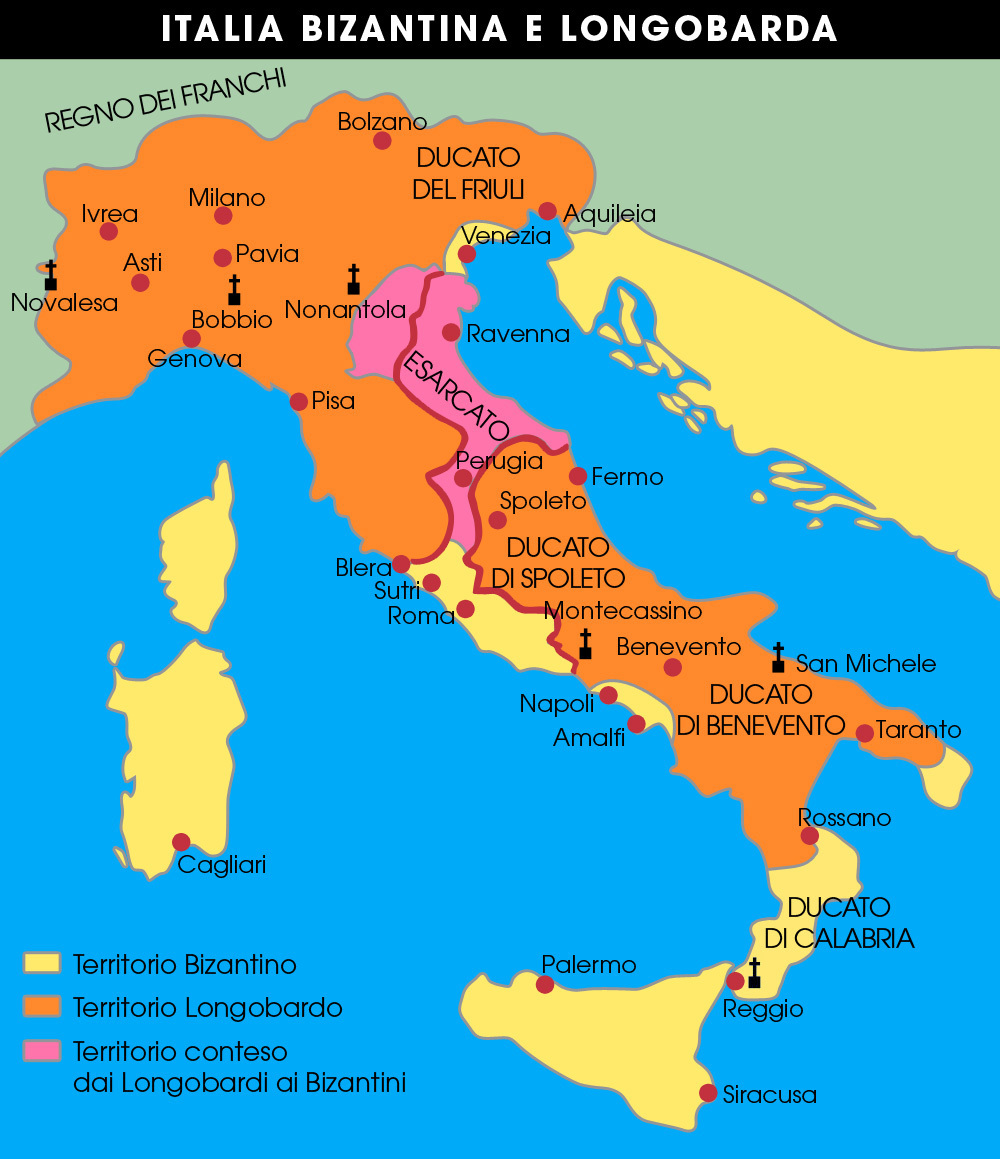
Italy in the 7th century. Rome is quite close to the frontier zone and more difficult to supply with the contested corridor to Ravenna and the Adriatic. Wikimedia Commons.
Can studying exchange and identity give us a better understanding of what made and ended Byzantine Rome? Is there a correlation between the material wealth found in archaeological records and the self-perception of being ‘Roman’?
Combining archaeology and history can help fill complementary gaps. Archaeology can give us ‘raw’ data and history can be used to contextualise it. Enrico Zanini proposed the study of ‘archaeological indicators’, which combines both disciplines. Ceramics and coins can be studied according to their distribution, making them ‘indicators’ of how trade networks and economic systems functioned (Zanini, 2014, p. 432-433). These networks not only demonstrate wealth distribution, but also communications and exchange between East and West and how Rome fits in.
One Man’s Trash is Another Man’s Treasure: Crypta Balbi
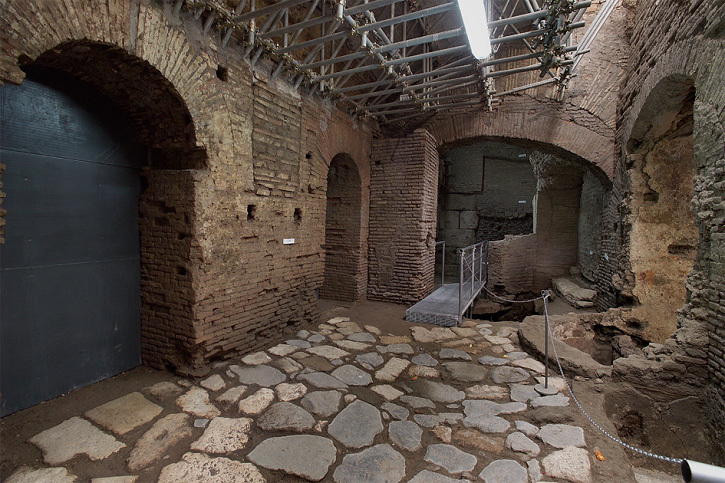
Figure caption: Crypta Balbi’s exceptionally well-preserved archaeological foundations. Street with workshops. Crypta Balbi.
Crypta Balbi is the perfect site for this. Now a museum situated in the south of the historical centre of Rome, the site that has been identified as a ‘rubbish dump’ contains a well-preserved layer stratification with valuable archaeological data. This enables us to study the imports in chronological order and to investigate Rome’s evolution in the Post-Roman Mediterranean. It has two deposits with finds from mainly the seventh and eighth centuries, exactly the ‘black box’ period wherein the shift from Byzantine to papal Rome took place.
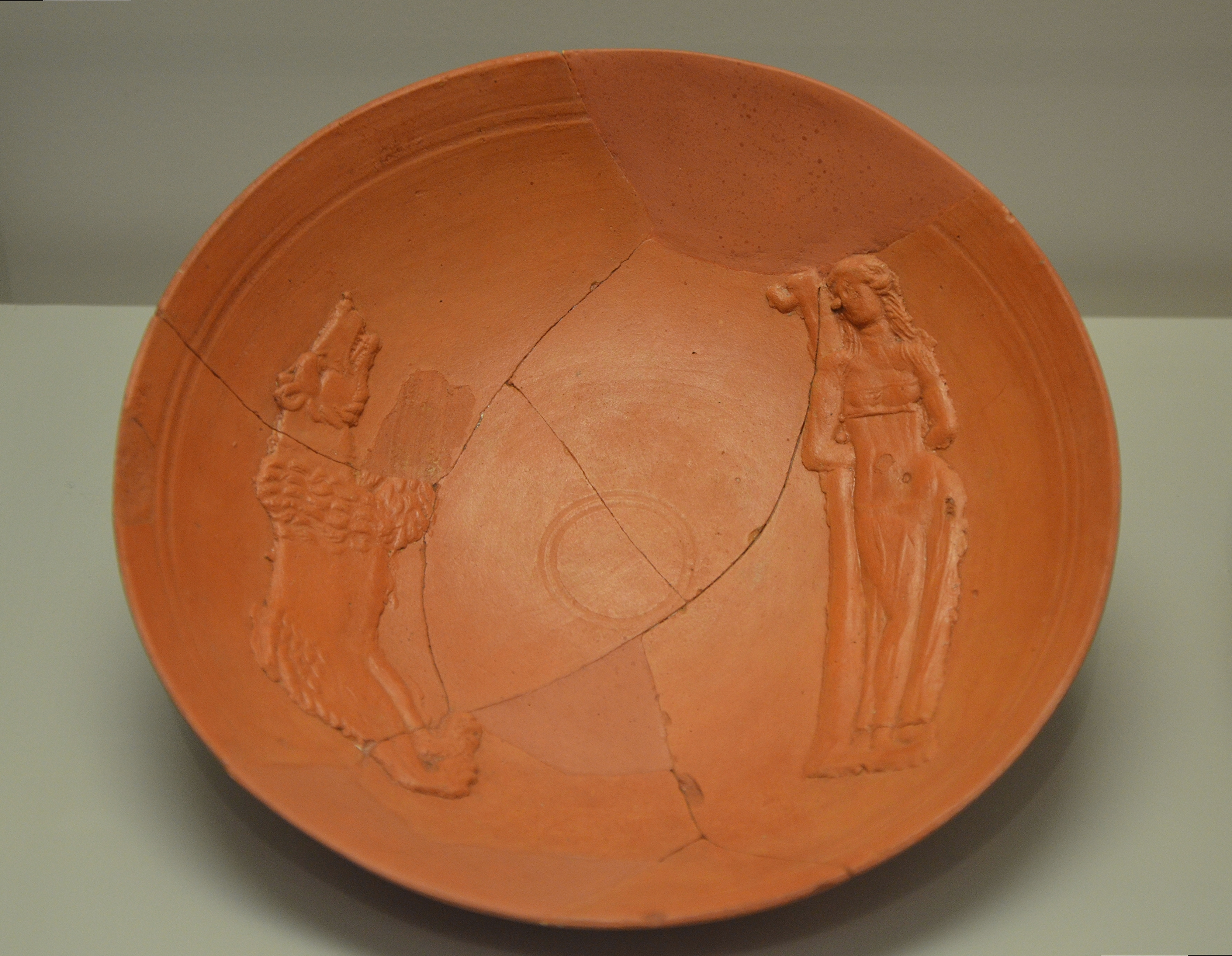
An example of 4th century ‘African red slipware’, found at Crypta Balbi. Standardised glazed ceramics like these would slowly disappear throughout the Middle Ages. Wikimedia Commons.
Ceramics: Wealth and Trade
The provenance of ceramics can tell us to what extent Rome was connected to the Mediterranean, and how available goods were. The deposit of the seventh century was generally more diverse: it contained international products from as far as Egypt and the Levant. For example, lamps from the much cherished and highly valued ‘African red slipware’ type of ceramics. These imports gradually disappeared and gave way to Sicilian imitations of these luxury lamps. Even though the loss of Egypt in the mid seventh century was felt across the entire Empire, we do not see another international product take its place in Rome. Instead, even the Sicilian lamp types were phased out by local Roman production towards the eighth century. Ceramic wares gradually regionalised: daily products were not imported anymore, but made in Rome.
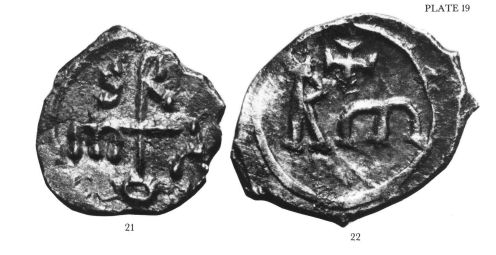
Coinage: Byzantine State Control
Coinage is a good indicator of state control in a this part of the Empire (Prigent in Cosentino, 2021, p. 328). Imperial coins are indicators of imperial presence (such as paid officials) and therefore how well-integrated Italy was into Byzantine system. On top of that, coins minted in Rome had a special symbolic value. Coin finds too, indicate regionalisation, but not at the same speed as ceramics: there seems to be a quite abrupt halt in coin finds in the turn towards the eighth century. The last identifiable coins are attributed to the first reign of Justinian II (r. 685-695). The high-value currency like golden coins (solidi) suffered considerably, plummeting as low as a 40% gold rate during Leo III’s late reign (r. 717-741) but lower-value coins continued to be circulated. The coins that still were minted in Rome had increasingly abstract portraits, possibly done on purpose by the Pope (Rovelli, 1998, p. 81) and also started bearing monograms of the Pontiff, removing imperial iconography entirely. The governmental system and monetary circulation too, moved outside the Byzantine sphere.
The remarkable development is the two different paces of regionalisation. Ceramic wares show a steady progress towards self-sufficiency, but the fluke in Byzantine coins around Leo III has ideological implications.
Being 'Roman' in a post-Roman world
The decrease in archaeological material during the Middle Ages has not gone unnoticed. Bryan Ward-Perkins considers ‘the disappearance of comfort’ a consequence of the disintegration of the Western Roman Empire. By this, he means the disappearance of everyday luxury and communal wealth that characterised the classical world (Ward-Perkins, 2006, p. 94). He provides archaeological data to demonstrate a decrease in the quantity and quality of goods in the post-Roman world. But a decrease in quantity does not immediately mean a downgrade. This is where the archaeology of identity and the importance of expectations come in.
During the classical era, a certain Roman lifestyle of everyday luxury was embedded in the self-perception of Roman identity; the Mediterranean was set in motion to supply Rome. The food imports destined for the Eternal City were called annona. Things did not remain the same over a time span of roughly a few centuries. Whereas the Rome of the Early Roman Empire (up to the third century CE) was a peaceful core province, by the seventh century the city was situated in a militarised frontier zone and confronted by Lombard invasions. This militarised society was less likely concerned with luxury and therefore had different expectations. The inhabitants of medieval Rome (shrunken in general, including in population and production) may not have experienced these lower quantities (which we have signalled with the benefit of hindsight) as a downgrade as described by Ward-Perkins.
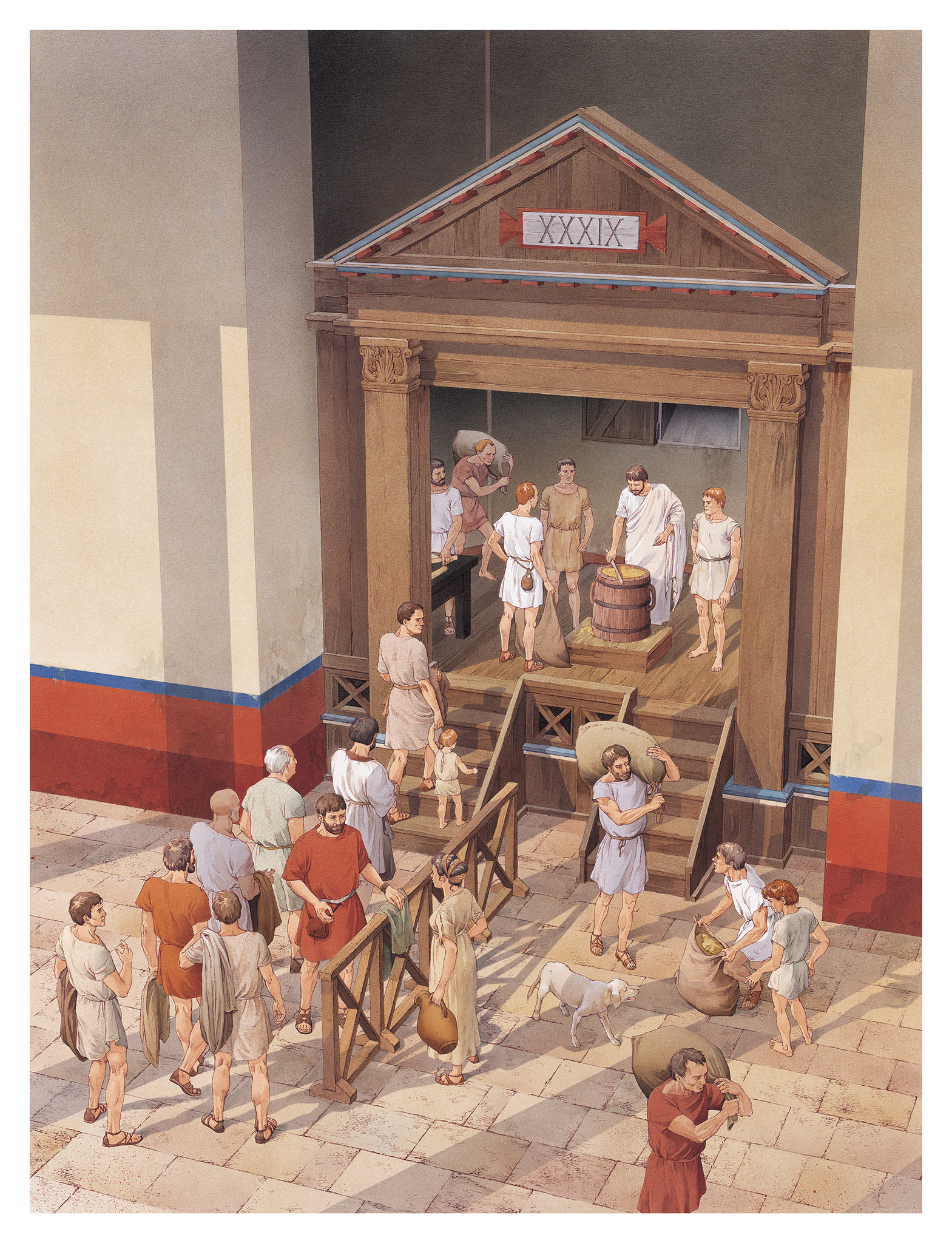
Artist’s impression of the food distribution at Crypta Balbi in classical times. Courtesy of Studio Inklink.
The citizens of Byzantine Rome lived a quite different life. To compensate for the lack of state-provided provisions, the largest landowner – the Church – started using its patrimonies in Southern Italy to sustain Rome. The annona was thus not provided by the state anymore, but by the Pope. Simultaneously, the idea of classical communal wealth had changed. Public buildings financed by Senators were replaced by ecclesiastical building projects. The fact that these kinds of projects remained financed meant that the market did survive the disappearance of Byzantine presence.
The Pope and Rome vs. Emperor Leo III
Already largely self-sufficient as shown through ceramics, with a low imperial presence demonstrated through coinage, Rome’s connection to Constantinople lingered on a religious thread that kept the cities connected. The killing blow was struck by the Byzantine Emperor Leo III , who enforced a policy that banned the veneration of icons – commonly known as ‘Iconoclasm’ . The Pope and Emperor had opposing views, which led to targeting actions against the other in an attempt to make the other concede. Leo took drastic measures to punish the Pope by confiscating his patrimonies in Southern Italy in 740. The problem for Emperor Leo was that by doing so, he not only hit the Pope, but also the inhabitants of Rome who were reliant on it. Constantinople had alienated Rome over a religious struggle.
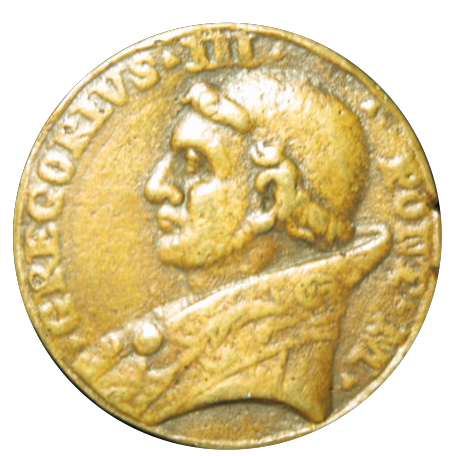
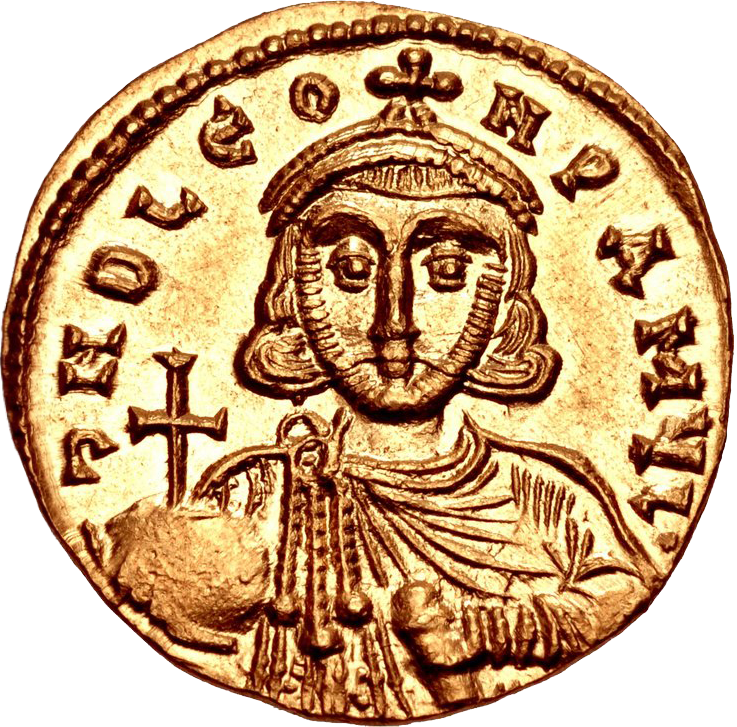
Conclusion: From Imperial to Papal City
The archaeological data from the Crypta Balbi excavations demonstrates the evolution of material development into the Middle Ages. Both ceramic finds and coinage confirm regionalisation, but also that these two strands regionalised on different paces.
Separating ways with Constantinople was a logical outcome for the city of Rome: the material evidence shows that Rome’s economy and government shifted from Mediterranean-oriented to Italian-oriented. Rome slowly disappeared from the Eastern sphere, which made the Pope an important figure instead of the Eastern Emperor. Only kept together by ideological ties, Leo III definitely severed them by confiscating Southern Italian patrimonies in his fight over Iconoclasm. This blow also struck ordinary Roman citizens dependent upon them, who by then were totally alienated from the East.
These events reveal three important developments. First, Rome was able to sustain itself, which implies it was not dependent on imports from the Mediterranean anymore, unlike in classical antiquity. Secondly, the presence of the Byzantine governmental system had waned enough over the centuries for an ideological centre such as Rome to slip out of control. And lastly, Rome had lost its affinity with the Byzantines which explains why they hailed a rival claimant like a Frankish king to the Roman imperial title. With the material connections of trade and physical presence eroded, the ties between East and West were temporarily supported by an ideological commonality, until Iconoclasm, which also had negative material effects.
The toughened citizens of Rome felt zero affinity with Constantinople when their new powerful local leader, the Pope, crowned Charlemagne the ‘new’ Emperor in 800.
I would like to thank Simone Boni for allowing me to use Studio Inklinks artwork from Crypta Balbi. Their Instagram page can be found here.
The full essay Citizens Without Empire: Material Wealth, Trade and Identity in the City of Rome during the Early Middle Ages (6th-9th centuries) is available on Academia. The essay was written for the KNIR course ‘Byzantine Rome: Unknown Archaeology and History of the Eternal City (400-1000 AD)’ which was organised in September 2023 by Prof. Dr. J.A.C. Vroom, Dr. A.T. ten Harkel and Dr. W. Kool, Faculty of Archaeology, Leiden University.
Selected Bibliography
Abulafia, D. (Ed.). (2003). The Mediterranean in History. Thames and Hudson.
Arthur P. & Patterson, H. (1994). Ceramics and Early Medieval central and southern Italy: ‘A potted history’. In R. Francovich & G. Noyé (Eds.), La storia dell’ alto medioevo italiano (VI-X secolo) alla luce dell’archeologia (pp. 409-441). All’Insegna del Giglio.
Arthur, P. (1989). Aspects of Byzantine Economy: An Evaluation of Amphora Evidence from Italy. In V. Déroche & J.M. Spieser (Eds.), Recherches sur la Céramique Byzantine (pp. 79-93). École Française d’Athènes.
Arthur, P. (1993). Early Medieval Amphorae, the Duchy of Naples and the Food Supply of Rome. Papers of the British School at Rome, Volume 61, 231-244.
Arthur, P. (2007). Pots and Boundaries: On Cultural and Economic Areas between Late Antiquity and the Early Middle Ages. In M. Bonifay & J. Tréglia (Eds.), LRCW 2 Late Roman coarse Wares, Cooking Wares and Amphorae in the Mediterranean: Archaeology and Archaeometry (pp. 15-28). Archaeopress.
Carrera, S.C. (2016). Crypta Balbi: Un panificio di èta di tardoantica. Bulletino della Commissione Archeologica Comunale di Roma, CXVII, 289-294.
Ceci, M. (1992). Note sulla circolazione delle lucerne a Roma nell’VIII secolo: I contesti della Crypta Balbi. Archaeologia Medievale, 19, 749-766.
Cosentino, S. (Ed.). (2021). A Companion to Byzantine Italy. Brill.
Delogu, P. (2007). Rome in the ninth century: the economic system. In J. Henning (Ed.), Post-Roman Towns, Trade and Settlement in Europe and Byzantium: Volume 1 The Heirs of the Roman West (pp. 105-122). De Gruyter.
Manacorda, D. (1990). Excavations in the Crypta Balbi, Rome; a survey. The Journal of the Accordia Research Centre, Volume I, 73-81.
O’Hara, M.D. (1985). A find of Byzantine silver from the mint of Rome for the period AD 641-752. Schweizerische numismatische Rundschau, 64. 105-140.
Rovelli, A. (1998). La circolazione monetaria a Roma nei secoli VII e VIII. Nuovi dati per la storia economica di Roma nell’alto medioevo. In P. Delogu (Ed.) Roma Medievale: Aggiornamenti (pp. 79-91). All’Insegna del Giglio.
Saguì, L., Ricci, M. & Romei, D. (1995). Nuovi dati ceramologici per la storia economica di Roma tra VII e VIII secolo. In G.D. d’Archimbaud (Ed.), La céramique médiévale en Méditerranée (pp. 35-48). Narration Edition.
Saguì, L. (1998). Indagini archaeologiche a Roma: Nuovi dati sul VII secolo. In P. Delogu (Ed.) Roma Medievale: Aggiornamenti (pp. 63-78). All’Insegna del Giglio.
Ward-Perkins, B. (2006). The Fall of Rome and the End of Civilization. Oxford University Press.
Zanini, E. (2014). Economia dell’Italia bizantina e indicatori archeologici: Qualche ulteriore riflessione. Cahiers de recherches médiévales et humanistes, 28, 431-458.
Zanini, E. (2021). Cost, value and wealth distribution: Micro- and macroeconomy in Early Byzantine evergetism. European Journal of Postclassicalarcheologies, 11, 137-162.
© Kee-Lou Ooyman and Leiden Medievalists Blog, 2024. Unauthorised use and/or duplication of this material without express and written permission from this site’s author and/or owner is strictly prohibited. Excerpts and links may be used, provided that full and clear credit is given to Kee-Lou Ooyman and Leiden Medievalists Blog with appropriate and specific direction to the original content.


